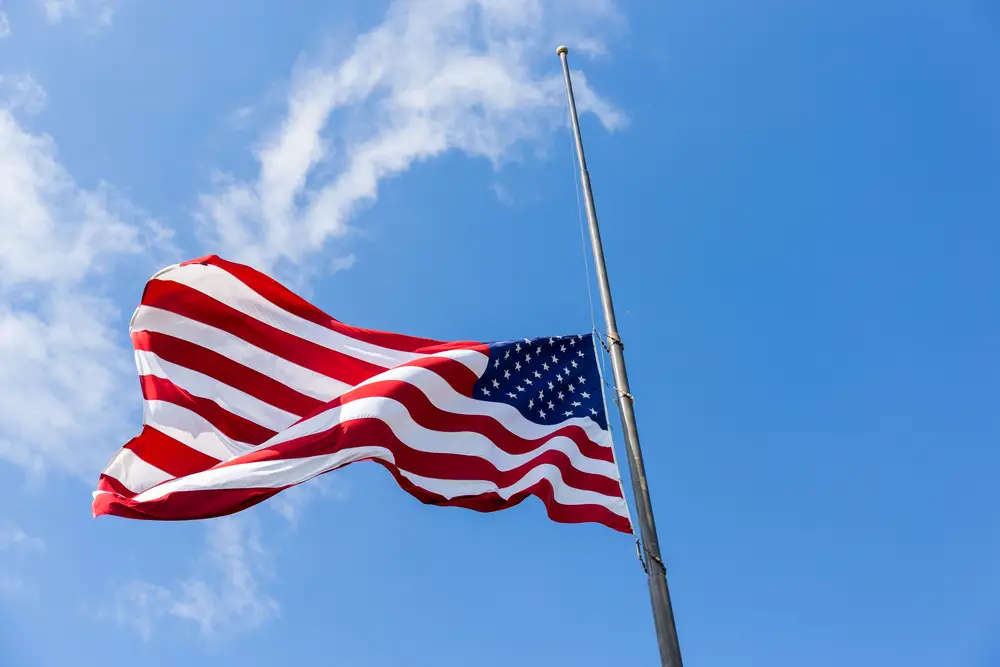Flying a flag “half-staff,” or when the flag is halfway between the top and bottom of the flagpole, is done during periods of mourning for a nation or to remember a significant event. But how and when did this tradition of lowering the flag begin?
The most accepted and oldest reference to lowering the flag in mourning originated from a 1612 British expedition attempting to find the Northwest Passage through Canada. The expedition was led by Captain James Hall aboard the ship Heart’s Ease. An incident happened with the area’s indigenous people, which resulted in Hall’s death.
When the ship returned to London, it was spotted by other sailing vessels with the flag over the poop, or rear of the ship, at half-mast, indicating a flag of mourning. The flag was not halfway down the mast, but exactly one flag’s width lower down the mast. This area above the flag signified room for another flag, the invisible flag of death.
While most of the time flying a flag in mourning is referred to as “half-staff,” the term “half-mast” is appropriate for those flags flown at sea. “Half-staff” is the proper term for flags flown on land. In Canada, however, the proper English term is always “half-mast,” whether on land or at sea.
No regulations existed in the United States for many years until President Dwight Eisenhower issued an official proclamation on the proper times on March 1, 1954. It established that the flag should be at half-staff at all federal buildings and grounds as well as naval vessels for 30 days upon the death of the president or former president and ten days for the death of the vice president, chief justice or retired chief justice, or speaker of the House of Representatives.
There are also times in place for other people in the government, depending on their position, and the president can order the flag to be at half-mast on the death of foreign dignitaries and other current or former government officials. The president can also order the flag at half-staff after a tragic event. The flag can be lowered to exactly the middle of the flagpole or at least to the flag’s width. The flag should be raised briskly to the top of the staff and then slowly lowered to the half-staff position.
The flag is at half-staff on some days, such as Peace Officers Memorial Day on May 15th, Patriot Day on September 11th, the first Sunday of Fire Prevention Week, and National Pearl Harbor Remembrance Day on December 7th. On Memorial Day, the last Monday in May, the flag is at half-staff from sunrise until noon, then raised to the top of the flagpole until sunset.
Sources: Eagle Mountain Flag, U.S. Department of Veteran Affairs, Desert Sun, Senate of Canada


